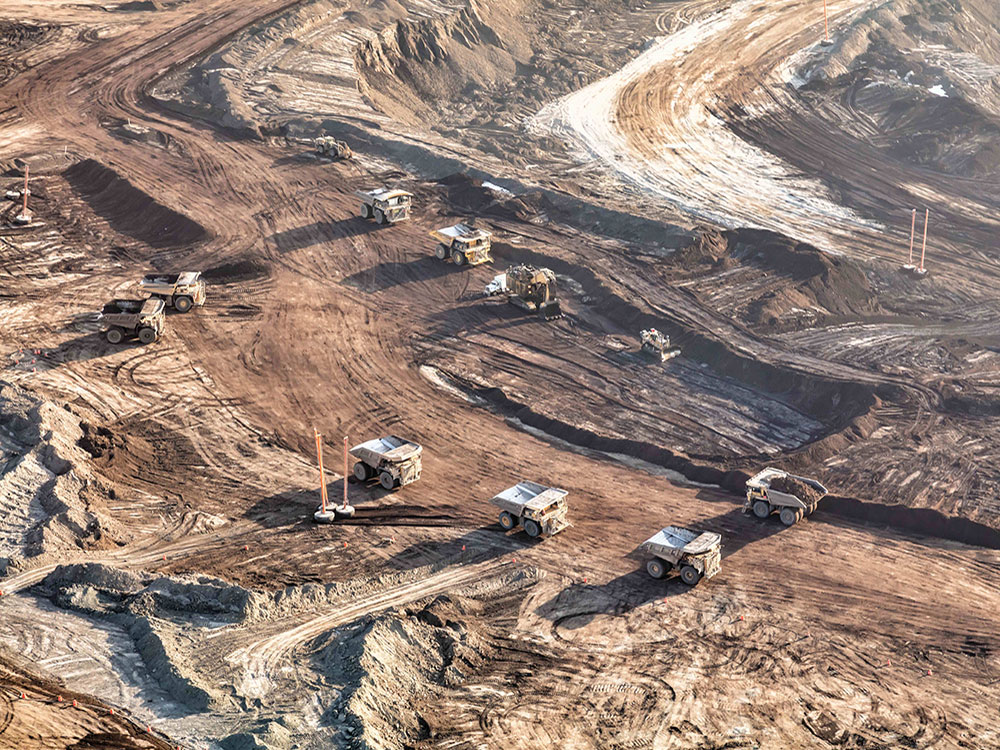A new study has confirmed what First Nations and the late water ecologist David Schindler persistently argued for more than a decade — the oilsands are producing far more pollutants than industry claims.
The research published in the journal Science found the total level of air pollution — what scientists call total gas phase organic carbon emissions — is 19 to 63 times greater than industry estimates.
The volume of polluting gases flowing from operations at the megaproject’s mining and steam injection facilities exceeds volatile organic compound emissions from all industries in Canada.
The study found the air pollution from the oilsands rivals the air pollution from all sources produced by a megacity like Los Angeles.
Using aircraft, a team of Yale scientists and researchers from Environment and Climate Change Canada captured the full range of gas pollutants from the megaproject in 2018 and then parsed their characteristics in a lab.
They include many more gases and particles than those currently monitored, which include discreet chemical pollutants such as carbon dioxide, methane, hydrogen sulfide or nitrous oxides.
Volatile organic compounds, when exposed to sunlight, react with oxygen to form a whole array of secondary aerosols with different properties, including ones with serious health effects that can affect downwind air quality.
Oilsand contaminants also include polycyclic aromatic hydrocarbons formed by the incomplete burning of fossil fuels. They have been linked to serious health damage.
“The magnitude of the observed emissions from oilsands operations was larger than expected,” said John Liggio, one of the paper’s authors and an air quality chemist at Environment and Climate Change Canada.
The study also found that the practice of drying toxic tailings to reduce the hazard of nearly a dozen tailing ponds covering almost 300 square kilometres along the Athabasca River has added to the air pollution with fine particulates.
“Reducing liquid waste by such methods opens up potentially large and unexpected pathways of atmospheric pollution,” said the study.
The study is not the first to find consistent underreporting of air and water pollution from the megaproject in northern Alberta.
After a former provincial environmental minister claimed there was no evidence of pollution from one of the world’s largest energy projects, Schindler and PhD graduate Erin Kelly embarked on two independent studies to provide evidence to dispel the popular delusion.
Their first 2009 study short found that oilsands air pollution from mines and upgraders blackened the snow with thousands of tonnes of bitumen particulates and polycyclic aromatic hydrocarbons during the winter within a 50-kilometre radius of the project.
When the snow melted in the spring, the contaminants washed into the Athabasca River. The pollution amounted to an undisclosed annual oil spill between 5,000 to 13,000 barrels, the research found.
A followup 2010 study concluded that air pollution and watershed destruction by the oilsands industry annually added a rich brew of heavy metals including arsenic, thallium and mercury into the Athabasca River and at levels up to 30 times greater than permitted by pollution guidelines. Many heavy metals can also increase the toxicity of polycyclic aromatic hydrocarbons.
Both studies found that industry-funded monitoring was too haphazard to find evidence of contamination by toxic organic pollutants such as polycyclic aromatic hydrocarbons.
In 2013 a federally funded study confirmed Schindler’s conclusions by showing that air pollution has now contaminated lakes as far as 90 kilometres away from the massive mining project.
According to John Smol, one of Canada’s leading freshwater ecologists and a Queen's University professor, that study conclusively showed that bitumen pollution "is not natural, is increasing over time and the footprint of the industry is much bigger than anyone thought."
Since then one study after another have confirmed Smol’s observations as well as persistent industry underreporting of pollution.
A 2023 report, for example, found large discrepancies in greenhouse gas emissions reported by the industry on the ground, called bottom-up measurement, compared with actual emissions measured in the air by high-tech sensors on aircraft or satellites.
Researchers discovered that industry had probably underestimated greenhouse gas emissions by as much as 65 per cent. They added that “the observed emissions gap is equivalent in magnitude to annual CO2 emissions from a small European country such as Switzerland.
The researchers added that “the reconstruction of historical CO2 emissions suggests that a reporting gap may have persisted for at least the last 15 years and indicates that the methods and/or the underlying data used to produce bottom-up inventories may require further research.”
Meanwhile many Alberta’s politicians still argue that bitumen is a form of “ethical oil” and boast it has “world class” monitoring. The provincial government, a petrostate dependent on 30 per cent of its revenue from fossil fuel exports, even funds an industry propaganda agency called the Canadian Energy Centre.
The majority of bitumen produced in Alberta comes not from open-pit mines but from energy intensive operations that burn natural gas to create steam that is then pumped into the ground to melt bitumen deposits.
Last year the megaproject produced 3.8 million barrels of heavy oil a day. This year it broke the four-million-barrel-a-day record.
Bitumen requires a higher intensity of fossil fuels and water to mine and upgrade than conventional oil. As a result the oilsands account for nearly half of the climate-altering emissions from Canada’s oil and gas sector (the single largest source of emissions in the country at 28 per cent).
By itself the megaproject accounts for 12 per cent of all Canadian emissions. ![]()
Read more: Energy, Alberta, Science + Tech, Environment

















Tyee Commenting Guidelines
Comments that violate guidelines risk being deleted, and violations may result in a temporary or permanent user ban. Maintain the spirit of good conversation to stay in the discussion and be patient with moderators. Comments are reviewed regularly but not in real time.
Do:
Do not: